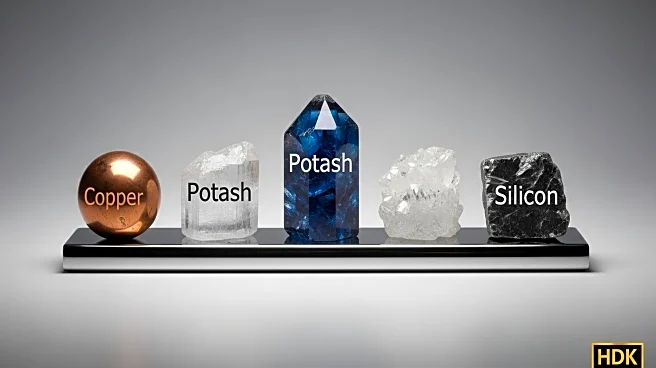What is the story about?
What's Happening?
The U.S. Geological Survey (USGS) has released a draft of its critical minerals report, recommending the addition of copper, potash, and silicon to the list of minerals impacting the U.S. economy. This update, the most significant since the list's inception in 2018, introduces new categories to assess the economic impact of 54 minerals: high risk, elevated risk, and moderate risk. The Trump administration has emphasized the importance of domestic production and processing of metals and minerals to bolster the economy and national defense. The USGS report aims to identify industries most vulnerable to supply disruptions, contributing over $4 trillion to the U.S. economy in 2024.
Why It's Important?
The inclusion of copper, potash, and silicon in the critical minerals list underscores their growing importance to the U.S. economy and national security. These minerals are essential for various industries, including technology, agriculture, and manufacturing. By identifying and categorizing critical minerals, the USGS provides valuable insights into potential supply chain vulnerabilities, enabling policymakers to make informed decisions to safeguard economic interests. The Trump administration's focus on strengthening the domestic supply chain reflects a strategic approach to reducing reliance on foreign sources and enhancing national resilience.
What's Next?
The USGS's updated report is expected to guide future policy decisions regarding mineral production and supply chain management. As the administration continues to promote domestic mineral production, stakeholders may see increased investment in mining and processing facilities. The categorization of minerals by risk level will likely influence government and industry strategies to mitigate supply disruptions. Ongoing efforts to support the domestic supply chain may lead to further initiatives aimed at securing critical minerals and enhancing economic stability.
AI Generated Content
Do you find this article useful?














